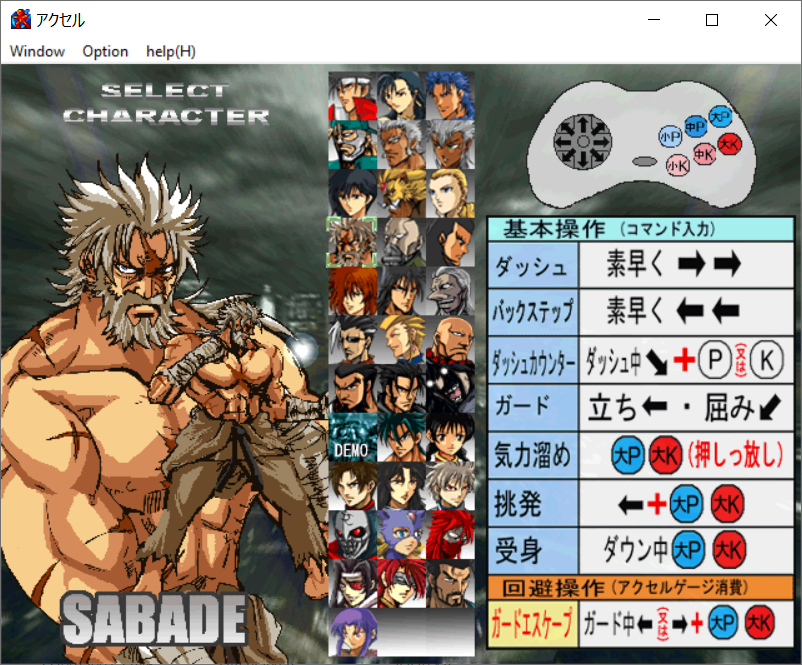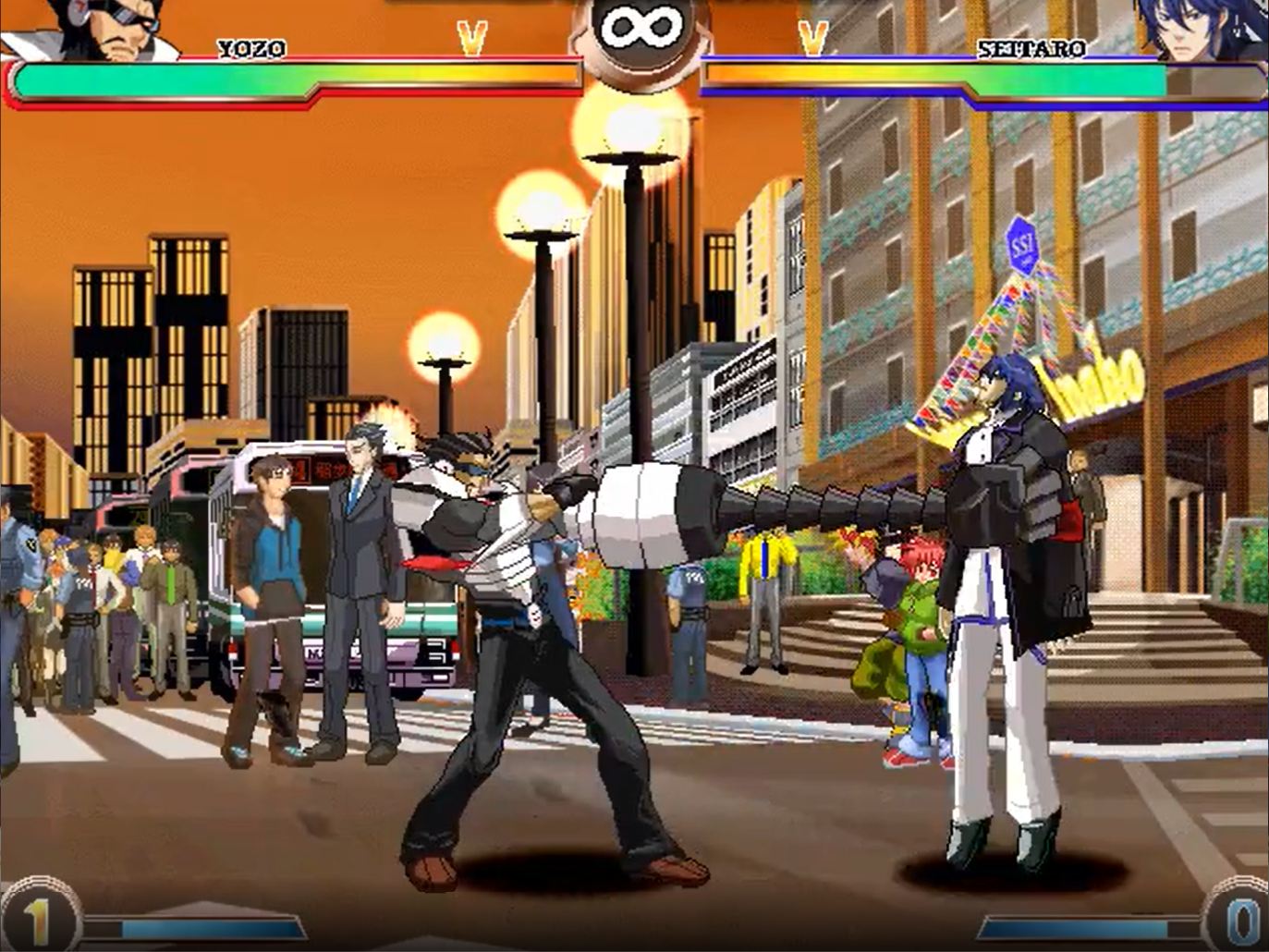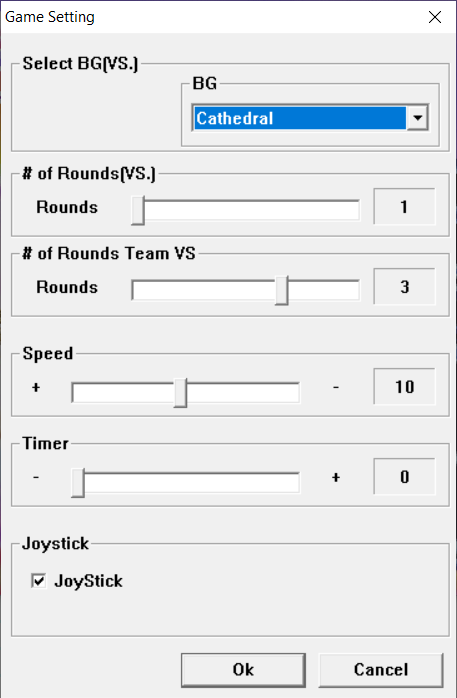Easy Game Engine to Make 2d Fighter
This article is part of my ongoing "Indie Fighting Game Thursday" review/retrospective series, now on supercombo.gg! Today we talk about an engine, 2D Fighter Maker 2002, which is still being used as of 2022 despite being old enough to drive! This article was originally published on my Medium blog and has been ported to Supercombo.gg for preservation and sharing it with more people in the fighting game community.
Making a fighting game is not easy, for a variety of reasons that range from making them completely deterministic, to underestimating their complexity, to the amount of graphical assets needed, to the balancing and fine tuning required to produce something worth playing. So, it's natural that we would all be grateful if there existed some engines that could ease the pain and allow for starting development with the smallest overhead possible.
(Un)suprisingly, there aren't manymodernengines that cover this particular niche. You have UFE2, a fairly complete fighting game engine that works with Unity and supports rollback netcode (but uses Photon as a middleware to connect players). Then, there is an Unreal Engine template for 2D fighting games in the works, another Unreal Engine template for anime fighting games, and maybe a platform fighter engine or two.
If we remove the requirement for amodernengine, most people familiar with fighting games know of one that is still pretty popular, despite being relatively dated:the one and only M.U.G.E.N., originally developed by the now defunct company Elecbyte. Being an old engine, made by a company which disappeared from the radar and with no clear copyright holder, is a recipe for disaster:M.U.G.E.N. games cannot legally be sold, which means that they are relegated to non-commercial projects, handily crafted fan games or broken messes with several hundreds characters.

Salty Bet is a popular byproduct of the M.U.G.E.N. scene: to describe it in a few words, put together n-thousand M.U.G.E.N. characters andlet them fight in AI vs AI matches non-stop on stream, while the logged in viewers bet virtual money (not real dollars!) on them for fun. It's suprisingly entertaining to watch.
Truth be told, there have been some original IPs that started in M.U.G.E.N., such as Fatal Art, Knockout!, and The Black Heart, which has been recently published on Steam after having been ported to M.U.G.E.N.'s spiritual, open source and copyright-friendly successor, I.K.E.M.E.N., but for the most part M.U.G.E.N. games tend to converge to the fan-game or random-character-collection side.
In Japan, however, another engine stole M.U.G.E.N.'s spot, a program published in 2001 by a company that is mostly known for creating RPG Maker: ladies and gentlemen, say welcome to 2D Fighter Maker 2002, published by Enterbrain!
Not the first, not the last
2D Fighter Maker 2002 (2DFM02, link to MyAbandonware) wasn't the first attempt of Enterbrain to enter the market of fighting game engines. There was a predecessor, called 2D Fighter Maker 95, which is quite infamous for being the engine used to build the even more infamous Arm Joe, an utterly broken doujin fighting game based on "Les Misérables" — yes, the musical, and no, I'm not joking.

When a plushie with a chad walk and melee Marth's throw range meets Jean Valjean, the plushie with the chad walk wins. (Source of the screenshot).
Point is, while M.U.G.E.N. was wildly popular in the West, 2DFM02 was THE engine to use in the doujin community in Japan. Sporting an intuitive user interface, requiring no real programming knowledge, and being shipped with with a demo game plus a handy pack of pre-made graphics (including stages and special effects), this engine is still an actually quite impressive piece of engineering. Bonus point for being a program that would — as of 2021 — be old enough to drink and drive in many countries around the world. Having no official English translation, however, 2DFM02 lagged behind M.U.G.E.N. outside of Japan, and didn't see a huge community forming behind it.
Now, you could ask me "why are you talking about such an old engine?"
Well, the answer is:because there are, as of 2021, still games made with it.

By browsing the net, one can find doujin games like Axel City, that sport an impressive amount of characters in an incredible '90s aesthetic. Sadly, the animations are definitely not on par with sprite quality. A sequel to Axel City actually managed to hit the arcades in Japan. Notice that the window bar is the only way to edit the game's options, something sadly very common when dealing with this engine.
An undying dinosaur
You might be excused for having thought this wasn't possible. Truth is, that this engine is still reasonably popular, and the Japanese doujin community keeps on making use of it. As if someone wanted to prove me right, on 29.08.2021 (the day this article was originally written), "Angels of Battle v1.5" made its triumphant appearance on itch.io; Sooner this same year, developer Studio S published "Climax Fighters", a Neo Geo Pocket-styled game [warning: the trailer is perfectly safe for work, but the game has NSFW content]; another Japanese developer, Light Green Eight, is currently using 2DFM02 to work on his magnum opus — the enhanced edition of his game "Inaho Town: Dynamite Bomb"; "Wonderful World" is still being developed as of 2021; A translated version of the 2DFM02 engine is also being used by the Brazilian developer Ulissan to build his own long-running fan-game "Ganbatte Karate".
Going slightly back in time, we have games of the caliber of "Axel City" and the memetically (in)famous "Dong Dong Never Die", both published between 2006 and 2009, and probably the most well known 2DFM02 game: "Vanguard Princess", which really pushed the limits of the engine.

There are some impressive games made with 2D Fighter Maker 2002, as of 2021. One of such games is "Inaho Town — Dynamite Bomb", currently developed by Light Green Eight (Source of the screenshot).
The main difference between M.U.G.E.N. and 2DFM02, in terms of production, is that since 2DFM02 game can be officially sold, there are plenty of them in the open market for doujin games — both good, decent and terrible ones, like everything under the sun.
What makes things confusing, is that for modern standards,this engine is now terribly outdated and limited.
Limitations foster creativity
If someone had a honest look at 2D Fighter Maker 2002 in 2021, they would immediately notice a couple of oddities:
- the only game modes available are Story (with a predetermined Vs AI match list that can be set per each character) and local VS between two players;
- there is a Team VS mode, but it's relatively broken, as the same character can be selected twice or more, so it hasn't seen a lot of success;
- there is no built-in support for assists or tag modes;
- there is no built-in training mode;
- there is no single match mode against the AI;
- one can change the stage, number of rounds and timer in VS mode only by means of an additional menu window, accessible by clicking on the game's title bar;
- the resolution is fixed to 640×480, and stages are fixed to 1280×960 pixels of size;
- controller support is poor and doesn't detect D-pads. On some PCs, controller detection can cause the game to slow down to a grind for some minutes before stabilizing;
- games made in Japan need you to set your PC's locale to Japanese or to use programs such as Locale Emulator to run them;
- there is no native online mode (but there are working solutions, like Lilithport);
- there is no direct support for unlockable content (e.g. stages, characters);
- there is no support for zoom-in/zoom-out effects;
- super moves do not pause meter gain, so they will instead keep on accruing meter on hit and block;
- the engine is only able to import uncompressed resource files: 8-bit, 256 colors Bitmap pictures and WAV or MIDI audio files.

No jokes, a menu like this is the only way to set things such as timer for VS mode, number of rounds or even if the game has to try and poll the system for connected joypads.
This is a pretty hefty list, if you ask me, and one that — in principle — would seem to bar its engine from any commercial use. However, despite all of this, it's still reasonably popular and it doesn't seem to be going to fade away anytime soon.
Pick up and play
The reason for its popularity might be that 2DFM02 is — in fact — pretty easy to pick up and play with. There is no scripting, only connecting action blocks in a row, to form a logical sequence of frames and conditions; you can draw hitboxes and hurtboxes by drag&drop with your mouse; adding complex inputs is relatively straightforward and also adding a basic AI to your characters doesn't require an enormous amount of time.
2DFM02 gives all the tools to prototype a sprite based 2D fighting gamevery fast. By having already acompleteset of sprites and sounds ready to use, one could make a rather balanced game with five/six playable character in a couple months (tested on my skin, as Iactually went through the process of making a 2DFM02 game using ripped sprites from The Spriters Resource database this year in July, as a hobby project). This is, by itself, a testament on how versatile this engine still is, despite its age, and probably the biggest reason why this forgotten tyrannosaurus, derelict of an older era, refuses to die.

The editor is surprisingly simple to use, once one gets the hang of it. You don't need to know Japanese, the translated version uses English names for the moves too (even if the English translation is somewhat broken and needs some time to "click")
Now, since I listed the limitations, let's instead list itsgoodfeatures:
- intuitive GUI editor with drag&drop mechanics;
- drag&drop system for drawing hitboxes, hurtboxes, throwboxes and pushboxes;
- support for custom hit reactions;
- support for detecting stages like "hit the wall" or "hit the ground";
- support for block button and back-to-block on a per character basis (notice that selecting a block button will make your character to turn around instead of walking back);
- support for air block;
- built-in damage scaling;
- move cancels and branching moves based on conditions are possible;
- there is a per-character configuration for the super meter;
- there is a built-in configurable "guts" system to reduce the damage once the character's health goes below a certain threshold;
- moves are built by putting action blocks in a row, with variables, loops, additional objects and possibility to "call" one move from another one;
- support for projectiles;
- support for after images, time stop, flash, and screen shake out of the box;
- support for six buttons plus directions;
- support for custom palettes;
- stages can have several different layers;
- the picture importer automatically sets the top-left pixel as the transparent color and is smart enough to "crop" the empty area around a frame while importing it;
- each character has an AI editor with simple controls to setup its behavior when controlled by the computer…
… and a lot of other nifty small things I am probably forgetting. Despite its limitations, 2DFM02 still offers A LOT to play with and can be a worthy experience for someone moving their first steps in the world of fighting game making! After all, maybenot alldinosaurs need to go extinct, right?

For how anachronistic it can sound, Angels of Battles v1.5 has been released right as I was writing this article. That's right, a brand new 2D Fighter Maker 2002 game released in August 2021.
How to get it?
The engine istechnicallynot abandonware, since the Japanese company which published it still exists and has rights on it (despite "forgetting" about it for a long time). However, if you want to have a go at it, there is an unofficial English translation (the same that I used to build my prototype) floating around. There are tutorials around the net, but in case you are curious, want to try out and have questions, I am open to offer guidance on my own Twitter account — my DMs are open.
Wait, there's more!
After publishing this article, I reached out for four fighting game developers who made use of this engine. My interviews with them can be read on this very website!
- 2D Fighter Maker 2002 – The Lost World (Part 1) ~ Angels of Battle v1.5
- 2D Fighter Maker 2002 – The Lost World (Part 2) ~ Inaho Town – Dynamite Bomb; Ganbatte Karate
Engine summary
Name of the engine: 2D Fighter Maker 2002 (called 2D Fighter Maker 2nd too)
Publisher: Enterbrain
Available on: PC (English version)
Year of release: 2001
Netcode: none (but one can use Lilithport for any 2DFM02 games)
Legal status: it is legal to sell games made with the Japanese version. The English version is an unauthorized, fan-made translation
In one sentence:good engine for beginners in the fighting game making scene, but has several limitations due to its age.
Special thanks to the Community Lab Discord server for showing me so many recent (and less recent) games made with this engine.
If you are interested in more coverage about indie fighting games, you can find me on Twitter at @AndreaDProjects
Other articles in the series
- Two Strikes — Samurai, honor, and death
- Arcus Chroma — less is more
- Fight'n'Jokes — rolling back, 25 years later
- Etehfowr Against — a charming, simultaneous 2v2 chaos
- Now on Kickstarer — Blazing Worldstars and Drag Her!
- Deep Doujin Dive — Phantom Breaker: Omnia (Demo)
He/him, PhD in Physics, developer of Schwarzerblitz, full-time programmer, part-time fighting games connoisseur. I'm always on the lookout for any new interesting indie fighting games while developing my own, so feel free to reach out on Twitter in case you have something cool to share!
Source: https://supercombo.gg/2022/04/05/2d-fighter-maker-2002-a-dinosaur-engine-that-refuses-to-die/
0 Response to "Easy Game Engine to Make 2d Fighter"
Enregistrer un commentaire